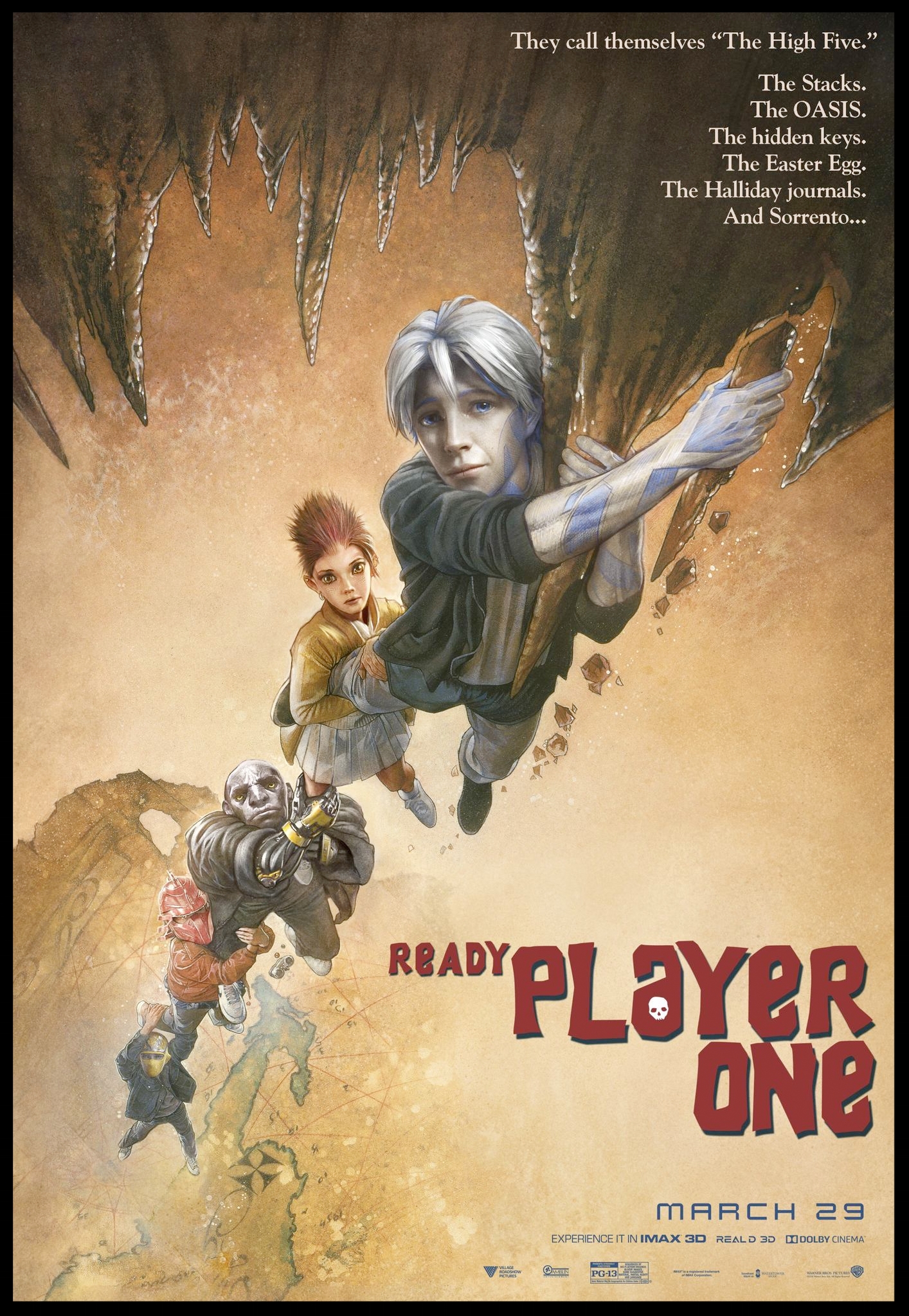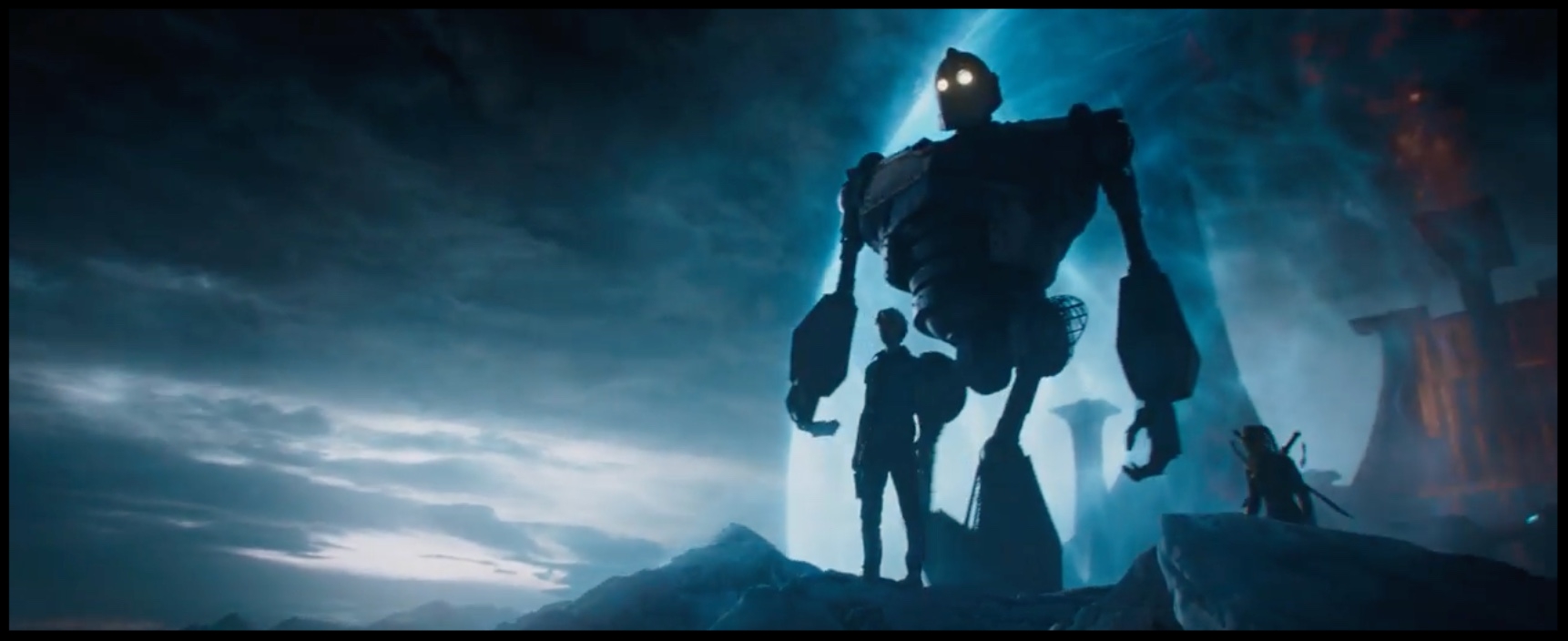Ready Player One: Reference Less and Say More
There is no finer satisfaction than catching a pop culture reference. The more obscure the better. If you don’t know what I’m talking about, than you’re not nerdy enough. Watching the trailer of Ready Player One - hearing Wonka’s “Pure Imagination,” seeing the main character’s avatar in a Buckaroo Bonzai suit, gazing upon the familiar face of the Iron Giant - my heart becomes so full of inexplicable joy and my skin just puckers into goose bumps. I’m going to need two seats, cineplex, because I’m beside myself.
Brains love recognizing stuff. We see something that resonates with us, be it an elementary school yearbook or Chucky from Child’s Play, and our brains flood with happy endorphins. It’s why pop songs have choruses, brands have logos, and Tom Cruise’s career has staying power. There is something in our subconscious that says, “I know that! Hooray!” The reaction has got to be evolutionary. Our ancient ancestors wandered the plains in search of mammoth meat. They had to get lost every once in a while. The silhouette of a familiar tree, the berries of a tried and true bush, or the face of a tribe member meant safety, survival, and belonging. Now we use that same part of our gray matter to point at a screen full of people riding ostriches and say, “Heh. Joust.”
From that innate chemical reaction alone, Ready Player One should be the most gratifying movie of all time. It is an orgy of 80s pop culture references that coddle us elder-millennials in a way that can only be described as gratuitous. We bounce through this film collecting sweet refs like Mario collecting coin. The main character, Wade Watts (Tye Sheridan), escapes the dystopian, not-too-distant future by entering into the virtual world of the Oasis. The Oasis was built by the reclusive visionary, James Halliday (Mark Rylance), who was obsessed with his Atari 2600, peak Matthew Broderick, and Battletoads. Upon his death, it is revealed that Halliday has hidden an Easter Egg inside the Oasis that bequeaths the finder all of his wealth and total control of the Oasis. The Oasis is soon flooded with egg hunters, or “gunters,” combing over Halliday’s personal diaries and 80s ephemera to find the clues that will lead to the prize. Wade and his fellow true Halliday disciples soon find themselves at odds with IOI, the evil corporation headed by Sorrento (Ben Mendelsohn), that has inundated the their simulated wonderland with their lackeys in hopes of getting jurisdiction over the Oasis for their nefarious corporate needs.
Due to sheer density, most of the pop culture references are relegated to novelty cameos and set dressing, but there are some really spectacular set pieces based around our favorite gems. But when you take the 80s nostalgia away, what is there left to Ready Player One? It’s a story of a nerdy, underprivileged, white kid who is good at video games, so he escapes his pathetic existence by donning an avatar and making a group of diverse friends of whom he is the de facto leader. In that world, he falls in love with an avatar whose thigh gap that can only exist in
fantasy, but lucky for him, she’s a very pretty girl with a birthmark and not a catfish named Darryl. When it comes time to defeat the evil corporation, he and his mates always overcome, and when push comes to shove, his comrades put their gunter aspirations aside and prioritize his success over theirs. They are never disappointed, competitive, or jealous. When he ultimately triumphs and is the hero, he magnanimously splits the winnings with his buds. Without the Gundams, Madballs, and King Kongs, Ready Player One is a fairly typical Y.A. story where the protagonist wins without any major set backs, conflicts of character, or competition.
He gets the game. He gets the girl. He gets the glory and is a great guy for sharing it.
Is it a Warner Bros.’ responsibility to do anything more than make a move that charms the dollars out of us? Is it enough to just fist pump at the sight of Chun-li while we munch our popcorn? Ready Player One is still a massively entertaining movie, but it says little more than, “Say, you crazy video game playing kids! Why not get out every once and a while?” The film takes a very broad swipe at a dystopian science fiction film, a genre that is, at its best, a vehicle for social commentary – Soylent Green, Blade Runner, Wall-E. There is still this blockbuster mentality that to make some real, cutting social commentary is a downer and would alienate people. People want to see characters that look like them, act like them, and have insecurities like theirs, win despite the odds. Brains love recognizing stuff. The most
satisfying experience would be to see the issues of our dystopian present projected on the screen and overcome. That, and more Robocop.




